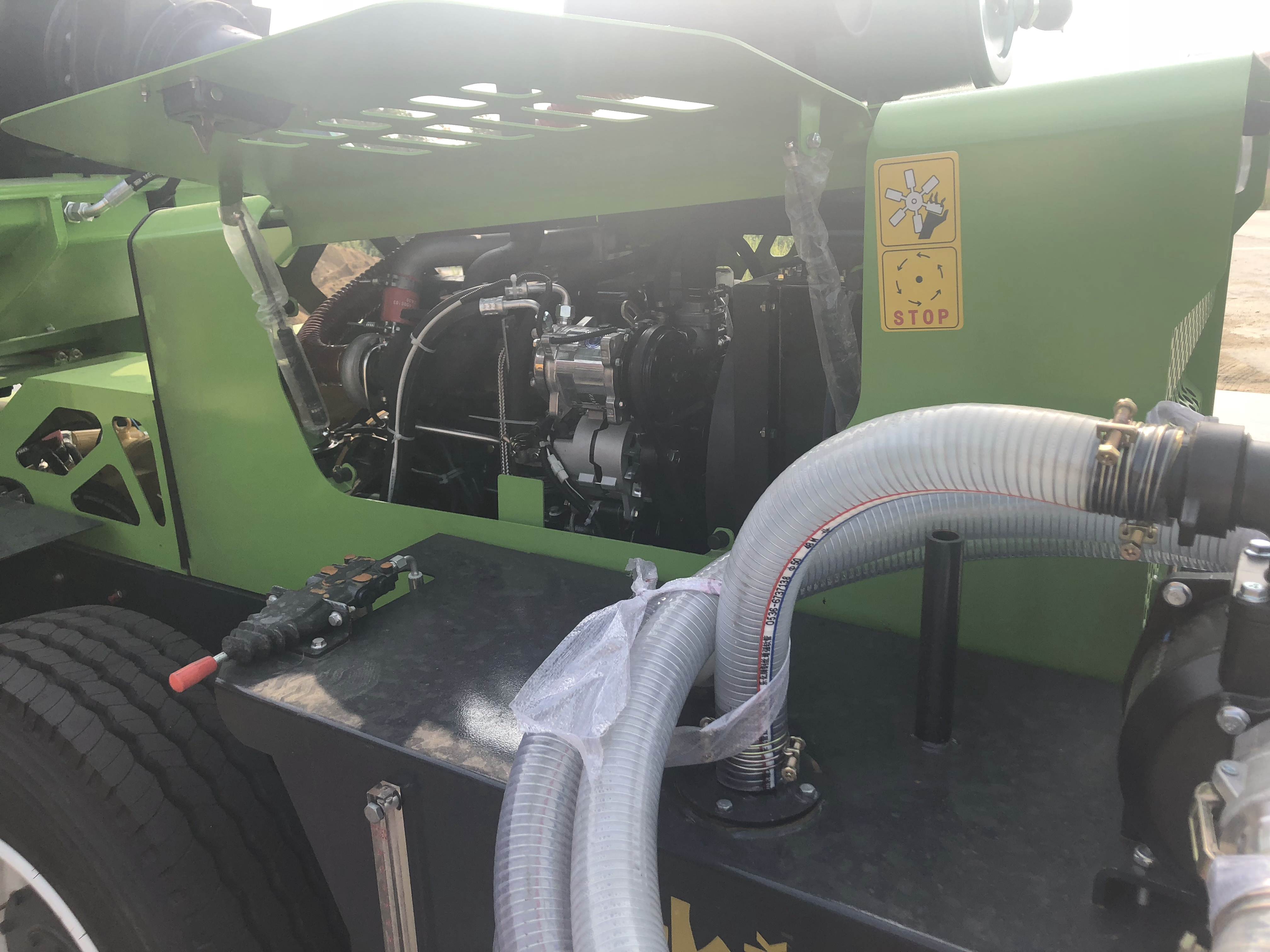概述:① 自动上料搅拌车油温是影响油压的主要因素之一① The oil temperature is one of the main factors affecting the oil pre
①
自动上料搅拌车油温是影响油压的主要因素之一
① The oil temperature is one of the main factors affecting the oil pressure
当自动上料车发动机油温过高时,不光使耗油量增加(渗漏、蒸腾、燃烧),而且影响机油质量,使自动上料车发动机各机件冲突外表的油膜不易构成和保持,形成主油道油压不能建立,然后加重机件磨损。而水温对油压的影响必须经过油温才干完成。所以具有必定的间接性,需要必定的时间。
When the engine oil temperature is too high, it will not only increase the fuel consumption (leakage, transpiration, combustion), but also affect the quality of the engine oil, which will make it difficult to form and maintain the oil film on the surface of the conflict parts of the automatic loading car engine, and the oil pressure in the main oil channel can not be established, and then the parts will be worn. The effect of water temperature on oil pressure must be completed by oil temperature. Therefore, it has certain indirectness and needs certain time.
②自动上料搅拌车油温过高直接损害发动机
② High oil temperature of automatic feeding mixer directly damages engine
自动上料搅拌车发动机的温度过高是指发动机的油温、水温超过90℃。因为热胀冷缩的原理,在温度提升后容易照成发动机空隙缩小,构成严重磨损或“拉缸”。
The excessive temperature of the engine of the automatic feeding mixer means that the oil temperature and water temperature of the engine exceed 90 ℃. Because of the principle of thermal expansion and cold contraction, it is easy to reduce the gap of the engine after the temperature is increased, resulting in serious wear or "cylinder pulling".

当过度磨损产热量超过散热量时,轴瓦温度就会上升,部分温度到达铅的熔点,轴瓦中的铅和铜就会熔化,终导致曲轴与轴承严重烧蚀或发生“瓦抱轴”,后果不堪设想。因此,当自动上料车油和水的温度一起过高时,应当先降油温。
When the heat produced by excessive wear exceeds the heat dissipation capacity, the temperature of Bearing Bush will rise, and part of the temperature will reach the melting point of lead, and lead and copper in the bearing bush will melt, which will eventually lead to serious ablation of crankshaft and bearing or "Bush shaft holding", and the consequences are unimaginable. Therefore, when the temperature of oil and water is too high, the oil temperature should be reduced first.
自动上料搅拌车
Automatic feeding mixer
③ 先降水温对自动上料车发动机主轴油道油压建立影响大
③ First cooling water temperature has a great influence on the establishment of oil pressure in the main shaft oil channel of the engine of automatic loading vehicle
所周知,降水温一般是采取“降负荷,高转速”的办法。当转速过高时,就会增大活塞连轩组的惯性力和离心力,使曲轴轴承的负荷加大。一起,轴颈与轴瓦的相对冲突速度也会增大,使单位时间内发生的热量增加,机油泵油量下降,许多的机油从主油道内被甩出,然后导致各机件冲突外表因无满足的润滑油而加重磨损,油温进一步上升。
As we all know, precipitation temperature is generally adopted "load reduction, high speed" approach. When the speed is too high, the inertia force and centrifugal force of the piston Lianxuan group will be increased, and the load of the crankshaft bearing will be increased. At the same time, the relative collision speed between the journal and the bearing bush will also increase, resulting in the increase of heat per unit time, the oil volume of the oil pump will decrease, and a lot of oil will be thrown out from the main oil duct, which will lead to the collision of various parts, and the wear of the surface will be aggravated due to the lack of satisfied lubricating oil, and the oil temperature will further rise.
④ 自动上料搅拌车降油温可减缓水温升高的速度
④ Reducing the oil temperature of automatic feeding mixer can slow down the speed of water temperature rising
自动上料搅拌车水箱存在的作用,就是下降发动机的油温。降油温一般采用“降负荷,低转速”的办法。这时,冷却液虽然在高温零件处热交换的时间长,但水流速度减缓了,延长了散热时间。一起,又因为负荷削减、转速下降,各运动机件冲突发生的热量也相应削减。
The water tank of the automatic feeding mixer truck has the function of lowering the oil temperature of the engine. The method of "reducing load and low speed" is generally used to reduce oil temperature. At this time, although the heat exchange time of coolant at the high temperature parts is long, the water flow speed slows down and the heat dissipation time is prolonged. At the same time, due to the load reduction and speed drop, the heat generated by the conflict of the moving parts is also reduced accordingly.
所以,降油温不光能够削减发动机发生的热量,而且,能够间接地削减冷却液吸收的热量,然后也能够减缓水温升高的速度。
Therefore, lowering the oil temperature can not only reduce the heat generated by the engine, but also indirectly reduce the heat absorbed by the coolant, and then slow down the rate of water temperature rise.




